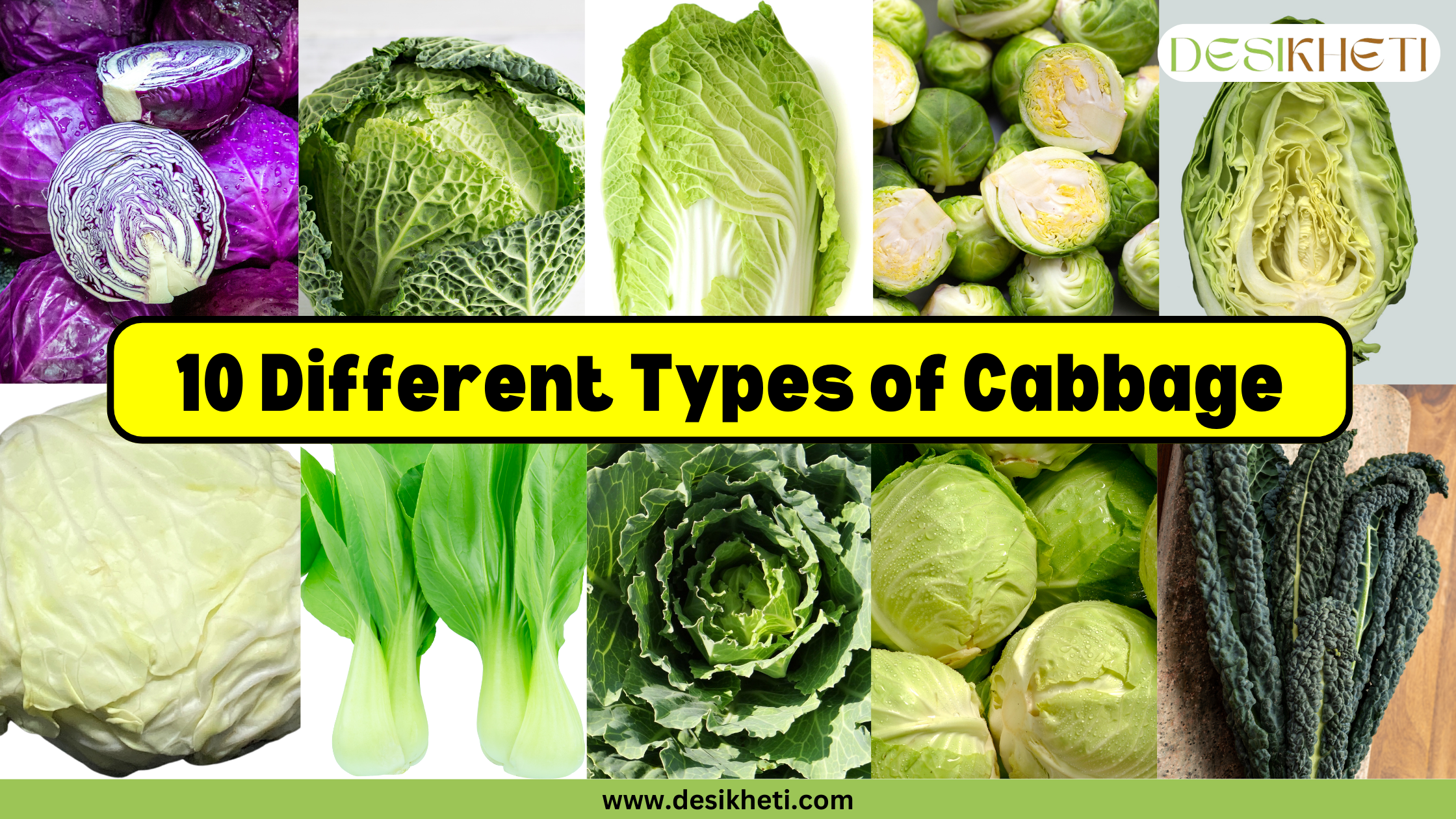Table of Contents
Introduction
Cabbage has been a key part of human diets for centuries. Cabbage is scientifically known as Brassica oleracea, and it is a member of the Brassicaceae family. Cabbage is one of the most widely consumed vegetables worldwide. Its popularity is due to its versatility, affordability, and rich nutritional profile. Cabbage is used in a wide range of dishes, from fresh salads and crunchy slaws to hearty soups and fermented foods like sauerkraut.
There are more than 400 different varieties of cabbage grown globally, each with distinct shapes, colours, and flavours. Whether round or conical, green or red, each type of cabbage offers a unique texture and taste. In this blog, we’ll explore 10 popular types of cabbage.

Red Cabbage
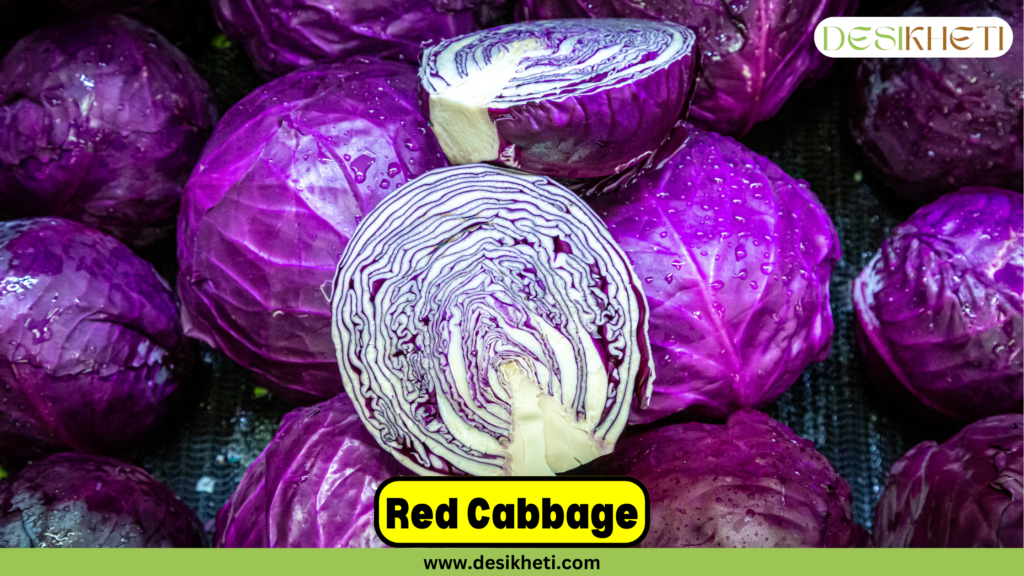
Red Cabbage is also called Purple Cabbage or Rotkohl. Red Cabbage is believed to have originated in the Mediterranean region along the European Atlantic coast. The name “Red cabbage” comes from its vibrant red colour, which is due to the presence of anthocyanins. Anthocyanins are natural pigments and also have antioxidant properties.
Red Cabbage has a round, tightly packed head and glossy red to purple-coloured leaves. The colour of the leaves varies based on the pH level of the soil in which the Red Cabbage is grown. In acidic soil, the leaves take on a redder hue, while in neutral soil, they turn more purple. If the soil is alkaline, the cabbage will have a slightly yellowish-green tint.
The leaves of red cabbage are thicker and more robust than those of green cabbage. This is because red cabbage takes longer to mature than green cabbage. Its crunchy texture makes it perfect for raw dishes like coleslaw and salads and as a garnish. Red Cabbage has a mildly peppery and earthy flavour.
Nutritionally, red cabbage is rich in vitamins C and K, dietary fibre, potassium, and folate. Red cabbage is also rich in antioxidants that might support heart health and reduce inflammation.
Red Cabbage grows well in cooler climates. Red cabbage needs well-fertilized soil with ample humidity for healthy growth. It is usually sown in the spring and harvested in the fall. Red Cabbage is commonly grown in Europe, the United States and China. Red cabbage cultivation has been increasing in India in recent years.
Savoy Cabbage
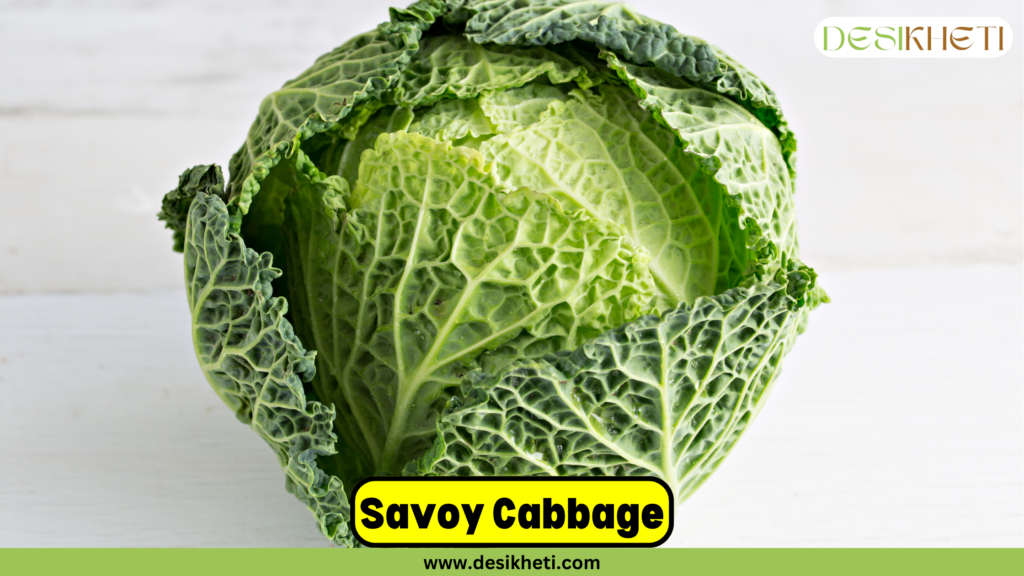
Savoy cabbage is also known as Milan cabbage, Curly Cabbage, or Lombard cabbage. Savoy cabbage is easily recognizable by its crinkly, deeply veined, emerald-green leaves. Unlike other cabbage varieties, Savoy cabbage has a looser, less compact head.
Savoy cabbage has a mild, slightly sweet flavour. The leaves are softer and more tender. The texture of the leaves is both delicate and firm, perfect for dishes where you want a crunchy yet tender element. Savoy cabbage is often used in soups, stir-fries, and as a wrap for stuffed dishes. Due to its beautiful texture, savoy cabbage is also used to garnish salads and other dishes.
Savoy cabbage is rich in vitamins K and C. It’s also high in dietary fibre. Savoy cabbage is popular in countries with strong European culinary traditions, such as Germany, Italy, and France, where it is frequently used in traditional dishes. Savoy cabbage thrives in cooler climates and is generally grown in well-fertilized soil with sufficient moisture.
Napa Cabbage
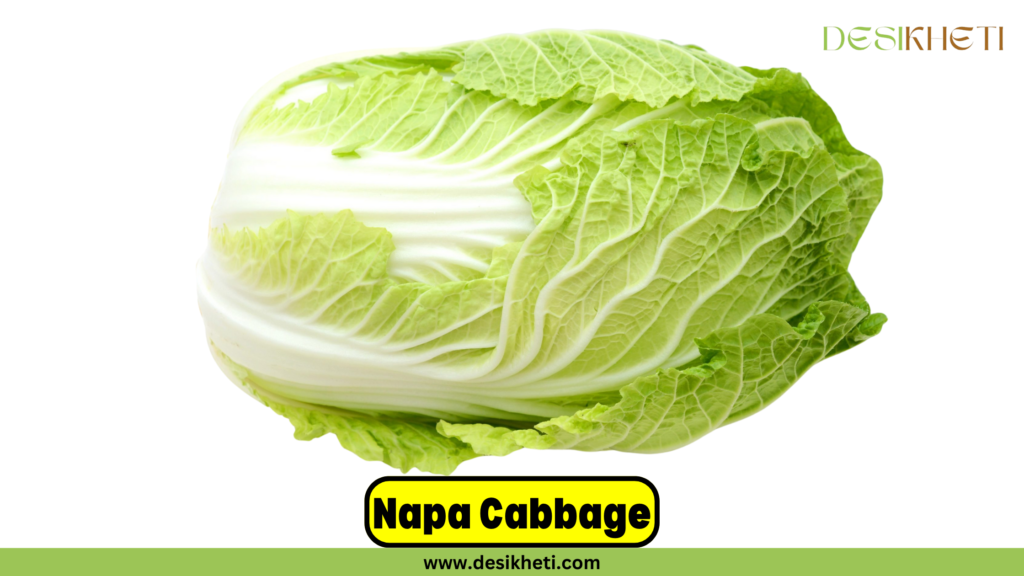
The other names of Napa cabbage are Celery Cabbage or Chinese Cabbage. Napa cabbage originated in China. Napa cabbage has an elongated shape, with tightly packed, pale green leaves that have a crinkled texture. This cabbage has a slightly sweet flavour. Its delicate texture makes it perfect for both raw and cooked preparations.
Napa cabbage is widely used in Asian cooking, particularly in dishes like kimchi, stir-fries, soups, and fresh salads. Napa cabbage is rich in vitamin C, vitamin K, folate, and fibre. It thrives in cooler climates, and it’s commonly grown in regions like China, Korea, Japan, the United States, and Europe. Napa cabbage is typically sown in early spring and harvested in late fall.
Brussels Sprout
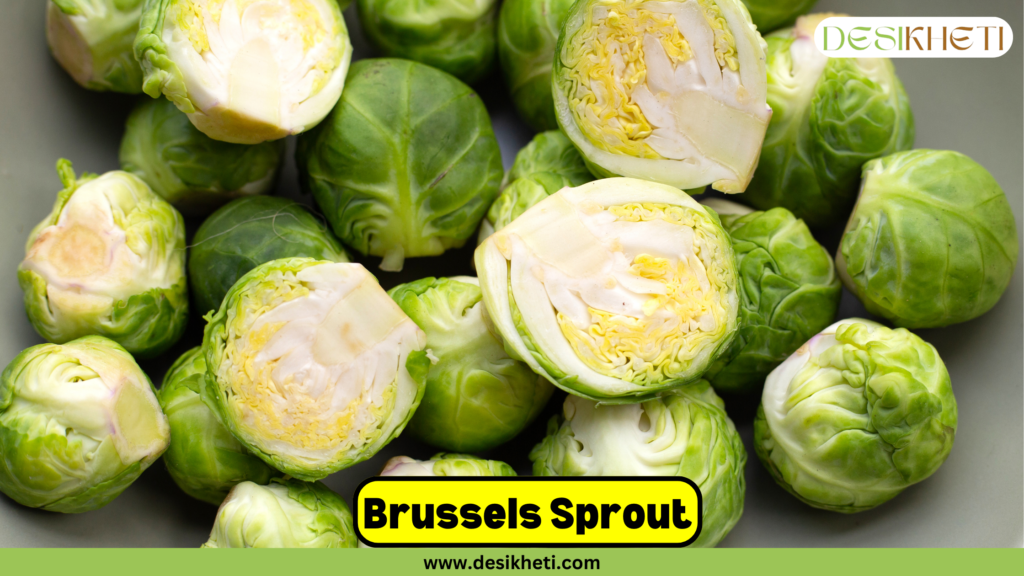
Brussels sprouts are also known as “Mini cabbages” as they are small in size. Although they are believed to have originated in ancient Rome, Brussels sprouts were more widely cultivated in Belgium in the 16th century, particularly near the city of Brussels, which is how they earned their name.
Brussel sprouts grow along thick stalks, each bud about 1 to 2 inches in diameter. Their leaves are tightly packed, with a vibrant green colour, though some varieties may show a hint of purple. When raw, Brussels sprouts have a firm, crisp texture, and their flavour is earthy with a slight bitterness.
Brussels sprouts are commonly used in salads and stir-fries and also served as a side dish. Brussels sprouts are popular in British, American, and French cuisines. Brussels sprouts are a rich source of vitamins A, C and K.
Brussels sprouts thrive in cooler climates, particularly in Northern Europe. They are grown widely in Belgium, the Netherlands, and the United Kingdom. Brussels sprouts are also grown in various parts of the world, such as the United States, Canada, etc.
Pointed Cabbage
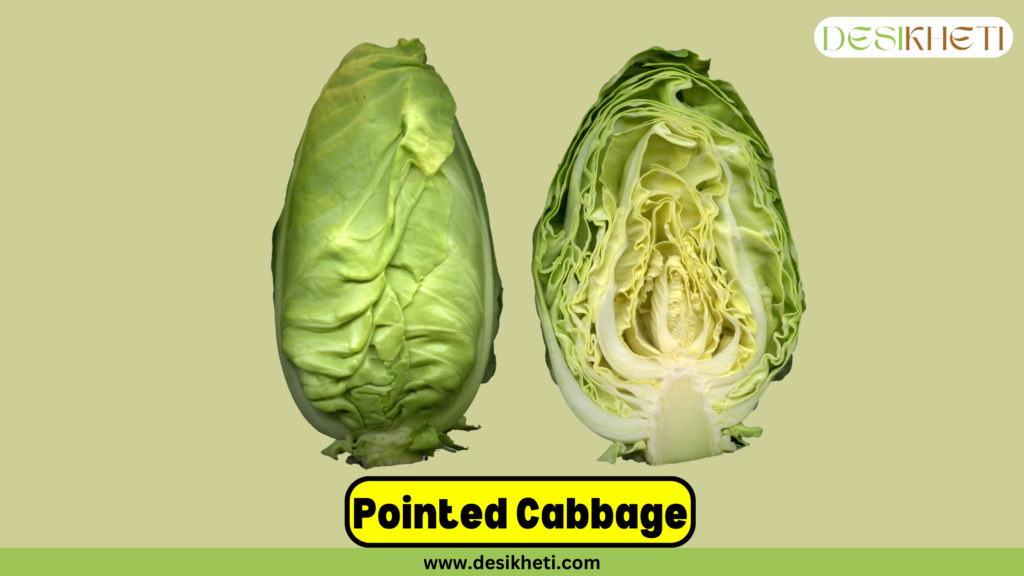
Pointed cabbage is also called Sweetheart cabbage or Conehead cabbage. This cabbage can be recognized easily due to its conical shape. Pointed cabbage has pale green leaves that are thin, tender, and loosely layered. Its head is lighter and more compact compared to traditional round cabbages. The leaves vary in colour, ranging from yellowish to blue-green colour.
Pointed cabbage has a mild, delicate flavour. This makes it ideal for a variety of dishes. The production of pointed cabbage has declined over time because white cabbage yields are higher, and its round shape is easier to process commercially. However, pointed cabbage remains a popular choice in home cooking and among those seeking a more delicate flavour profile.

Dutch White Cabbage
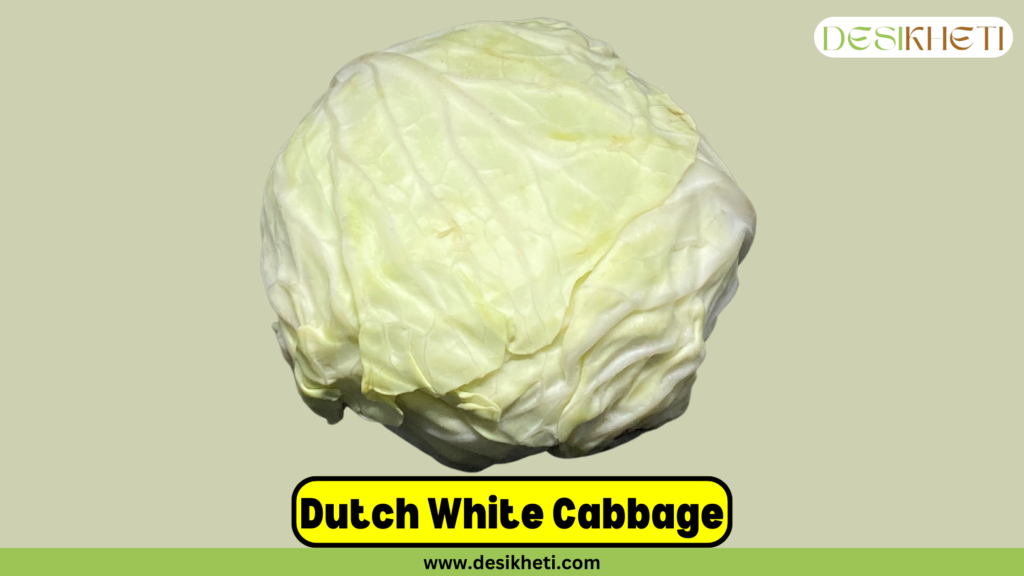
This cabbage is believed to originate in the Netherlands. This cabbage has smooth, pale leaves, which stand out compared to the rougher texture of other cabbage varieties. This cabbage forms tight, round heads with pale green to white leaves that are smooth and firm.
Dutch White Cabbage is known for its mild and sweet taste. It’s commonly used in coleslaws, fresh salads, soups, and stir-fries. Its high water content and flavour-absorbing properties make it an excellent choice for fermentation, especially for sauerkraut. Dutch White Cabbage is a rich source of vitamin C and vitamin K.
Dutch White Cabbage grows best in cool weather and well-drained, nutrient-rich soil. While its cultivation is prominent in Europe, especially in the Netherlands and neighbouring countries, it’s also grown in cooler regions of the United States and parts of Asia.
Bok Choy
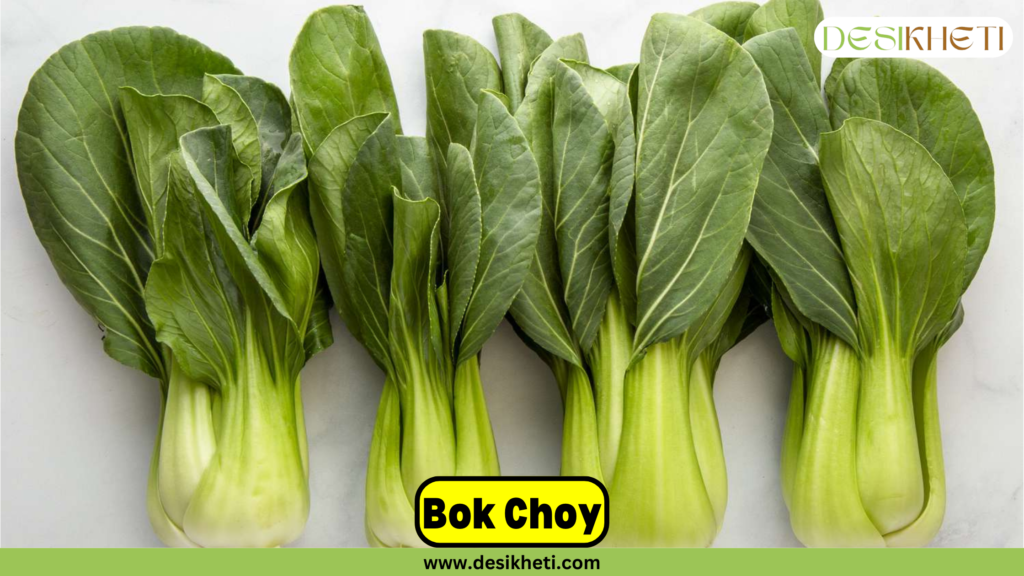
Bok Choy is also known as Spoon cababge or Pak Choi. Bok choy originated in China. Bok choy has smooth, green-coloured leaves and white stems. Generally, it is of two main types. One is the regular variety, with large leaves and white stems, and the other is the baby version, with smaller and more tender leaves. The leaves are crisp but delicate, while the stems are juicy and crunchy.
The flavour of Bok Choy is mild with a slightly peppery taste. It’s commonly used in Asian cuisine. Bok Choy is rich in calcium and potassium. Bok Choy is primarily grown in Asian countries like China, South Korea, India, etc.
Portuguese Cabbage
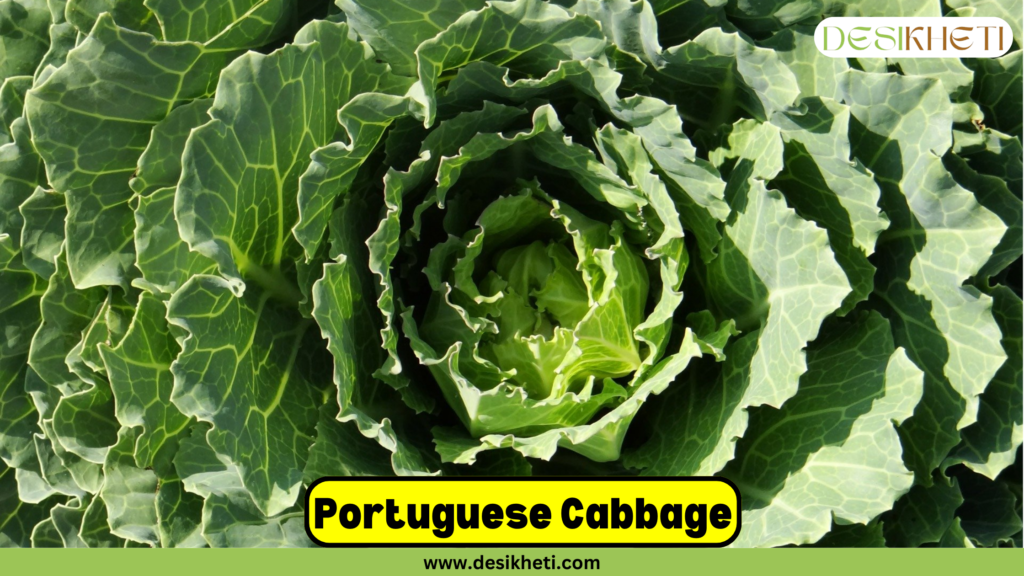
Portuguese Cabbage is also called Couve Galega or Portuguese Kale. This cabbage is native to Portugal. This cabbage variety has been used in Portuguese cuisine for centuries.Portuguese cabbage has long, slender leaves that are dark green and smooth, with slightly crinkled edges. The leaves grow in an upright, loose cluster.
Portuguese cabbage has a slightly bitter and earthy taste. It’s most famously used in Caldo verde, a Portuguese soup. Portuguese cabbage is rich in vitamins A, C, and K. This cabbage also contains iron, calcium, and potassium. Portuguese cabbage grows well in areas with cool temperatures and moderate rainfall. It is widely cultivated across Portugal, particularly in its northern regions.
Green Cabbage
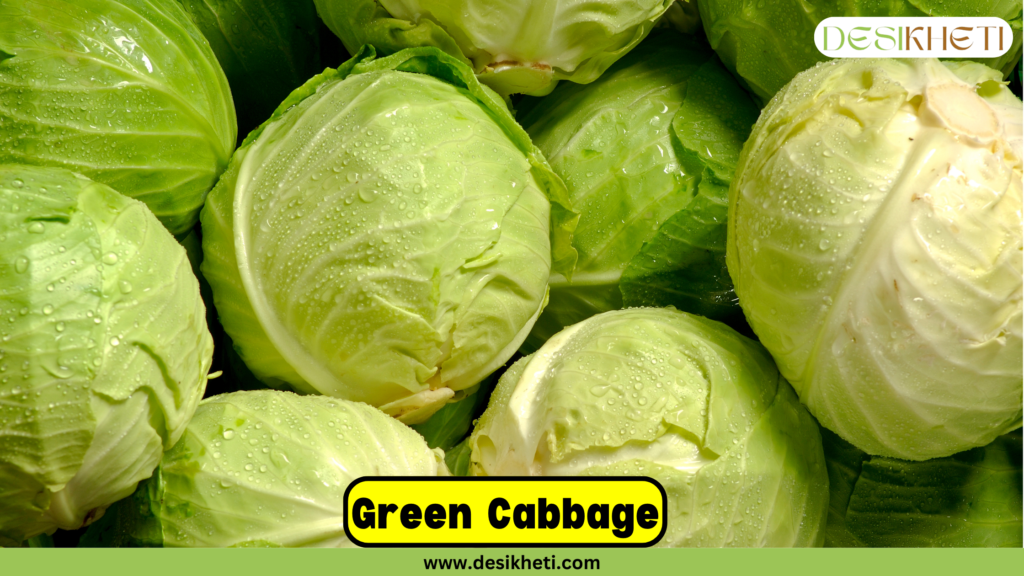
Green Cabbage is also called Common Cabbage or Smooth-leafed Cabbage. This is one of the most widely grown and consumed cabbage varieties worldwide. Green Cabbage is believed to have originated in the Mediterranean region and Western Europe. Green Cabbage grows well in cool climates. Green Cabbage is cultivated worldwide, particularly in North America, Europe, and Asia.
Green Cabbage has smooth, bright green leaves that form a dense, round or oval-shaped head. The leaves are thick, firm, and crisp, with a slightly waxy texture. They come in shades from light to dark green, depending on the variety. The inner leaves of green cabbage are slightly more tender than the leaves preset on the outside. Green Cabbage has a compact, tight head.
Green Cabbage has a mild, slightly sweet flavour with a hint of pepperiness, especially when eaten raw. This cabbage is used in various dishes from salads to stir fries. Green Cabbage is rich in nutrients like vitamins C and K, fibre, and antioxidants.
Tuscan Cabbage
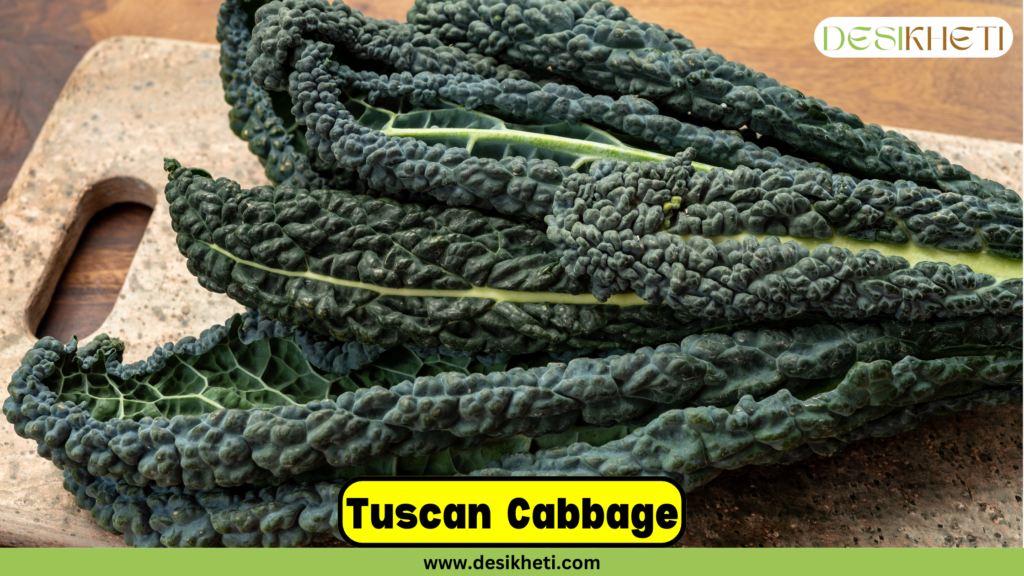
Tuscan Cabbage is also known as Black Cabbage, Tuscan kale, or Lacinato kale. The name “Tuscan cabbage” comes from the Tuscany region of Italy, where this cabbage is believed to have originated. Its name, “Black cabbage”, comes from the dark green, almost black, colour of its leaves. The leaves are long, narrow, and slightly wrinkled, growing in loose, upright clusters. Unlike traditional round Cabbage, Tuscan cabbage has a more elongated and unique appearance.
This cabbage is a key ingredient in Italian cuisine, and it’s commonly used in dishes like Ribollita, a hearty Tuscan soup. The robust, earthy flavour of Tuscan cabbage makes it a versatile addition to various dishes. Tuscan Cabbage is rich in vitamins A, C, and K. Tuscan Cabbage grows well in cool, moist conditions. It’s cultivated in many parts of the world, particularly in Europe, the United States, and Japan.

Cabbage is a versatile and nutritious vegetable, offering a wide variety of culinary uses. From the familiar green cabbage to the more unique varieties like pointed Cabbage and Portuguese Cabbage, each type caters to different consumer preferences, making it a valuable crop for farmers. As global demand for diverse cabbage varieties continues to grow, farmers have an opportunity to expand their production and experiment with new varieties.
If you’re interested in cultivating cabbage, you can explore DesiKheti’s collection of cabbage seeds.
Frequently Asked Questions About Cabbage
Q. What are the names of different cabbages?
A. There are many different types of cabbages. Some of the names include Red Cabbage, Savoy Cabbage, Napa Cabbage, Green Cabbage, Pointed Cabbage, and Portuguese Cabbage.
Q. What is the family name of cabbage?
A. Cabbage belongs to the Brassicaceae family.
Q. What is black cabbage?
A. Tuscan cabbage is also known as Black Cabbage. It is called Black Cabbage due to the dark green, almost black colour of its leaves.
Q. What is another name for red cabbage?
A. Red Cabbage is also known as Purple Cabbage or Rotkohl.
Q. What is the Indian name of cabbage?
A. In India, cabbage is commonly known as Patta Gobhi. It is also referred to as Kobi, Bandhakopi, Bandha Kobi, Ele Kosu, Bandh Gobi, and Muttaikose in various Indian languages.
Q. What are baby cabbages called?
A. Brussels sprouts are also known as Baby Cabbages.
Q. Who brought cabbage to India?
A. Cabbage was introduced to India by colonizing traders of the Portuguese.

